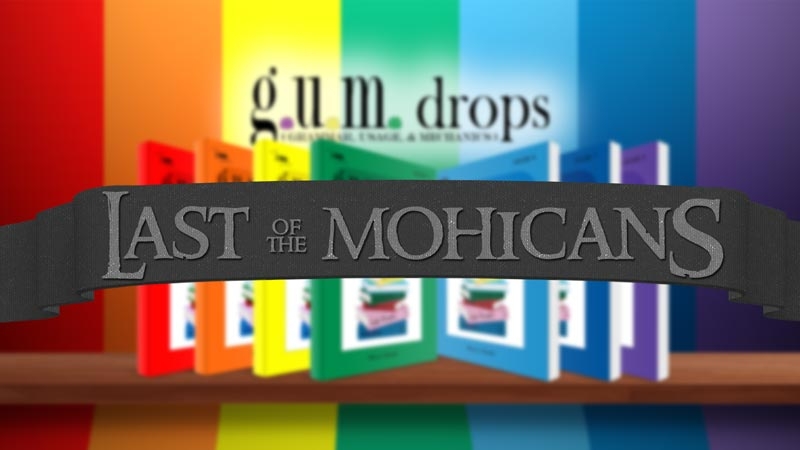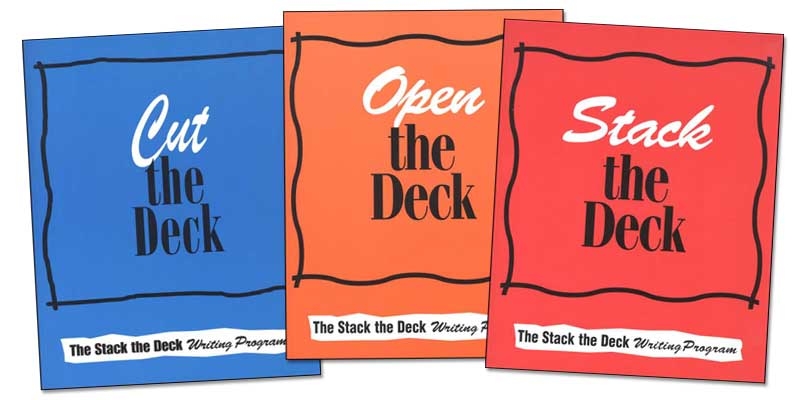 What do you do when your children are in middle school, looking towards their more intensive high school years, and they already loathe writing? Don’t worry – it’s not too late to turn ‘em around and prepare them for high school writing. This program from Apologia takes writing and breaks it up into tasty little bites that even writing-haters may begin to enjoy. The student book covers prewriting skills, expressing opinions, persuasive writing, expository writing, descriptive writing, narration, and poetry. Chapters are extremely readable and interactive, interweaving paragraphs of instruction with short workbook activities. The first chapter (on prewriting) takes a little survey of the student, asking what writing assignments are difficult for them, which are the easiest for them, what types of writing they enjoy, and what about writing is hard. Then, they answer some other fun questions about their writing preferences and attitudes, and learn how to brainstorm. The following chapter on opinions is just as interactive and personal, and takes the student from expressing their personal preferences on songs, games and food to learning how to organize a short essay expressing their opinion on anything.
What do you do when your children are in middle school, looking towards their more intensive high school years, and they already loathe writing? Don’t worry – it’s not too late to turn ‘em around and prepare them for high school writing. This program from Apologia takes writing and breaks it up into tasty little bites that even writing-haters may begin to enjoy. The student book covers prewriting skills, expressing opinions, persuasive writing, expository writing, descriptive writing, narration, and poetry. Chapters are extremely readable and interactive, interweaving paragraphs of instruction with short workbook activities. The first chapter (on prewriting) takes a little survey of the student, asking what writing assignments are difficult for them, which are the easiest for them, what types of writing they enjoy, and what about writing is hard. Then, they answer some other fun questions about their writing preferences and attitudes, and learn how to brainstorm. The following chapter on opinions is just as interactive and personal, and takes the student from expressing their personal preferences on songs, games and food to learning how to organize a short essay expressing their opinion on anything.
In this method, the student tackles writing in appealing chunks. After “testing the water” in the first two chapters, they’re ready to jump into persuasive writing. After thinking of several topics that they feel strongly about, students decide what they want to convince their reader of and then sharpen their skills with several short exercises that are not directly related to their future persuasive paper. When they come back to the paper, they start composing it piece by piece, focusing first on the opening, then on the conclusion, and then on supporting reasons. Other skills and activities related to the assignmanet are also incorporated before they write their full persuasive paper. These include analyzing a student example of persuasive writing, learning the finer points of addressing an audience, and how to strengthen their supported view. Cause-and-effect persuasion, expository and narrative writing are covered in the same way. Students learn about the type of writing, hone individual skills necessary to compose a piece of writing, and then write a complete piece at the end of each chapter. Full-color printing, readable chunks of text, fun graphics, and an engaging writing style set this aside as a “manageable – not overwhelming” writing course.
The teacher’s manual provides objectives for the course, a summary of all writing assignments, tips to help and inspire the student writer, tips to helping the writer proofread his/her work, a substantial section on grading (with examples), the 10-Minute Writing Plunges program, and an answer key to the short exercises in the book. The 10-Minute Writing Plunges program is basically a system of prompts for four days each week from September to May. Every week, you will give the student a prompt on Monday, Tuesday, Wednesday, and Thursday. After you give them the prompt, they will write on the topic for ten minutes, and then put it away. At the end of the week, the student chooses their favorite paper, proofreads and edits it, and then turns it in the next Monday. Prompts are engaging and thought-provoking, and the student may even begin to look forward to “Plunge”-time! The 10-Minute Writing Plunges program can be used as a break from Jump In! or as another year’s worth of writing instruction and activities. I think that reluctant and hesitant writers (and their parents) will find that the format, approach, and coverage of this program are “just right.”
— Jess




